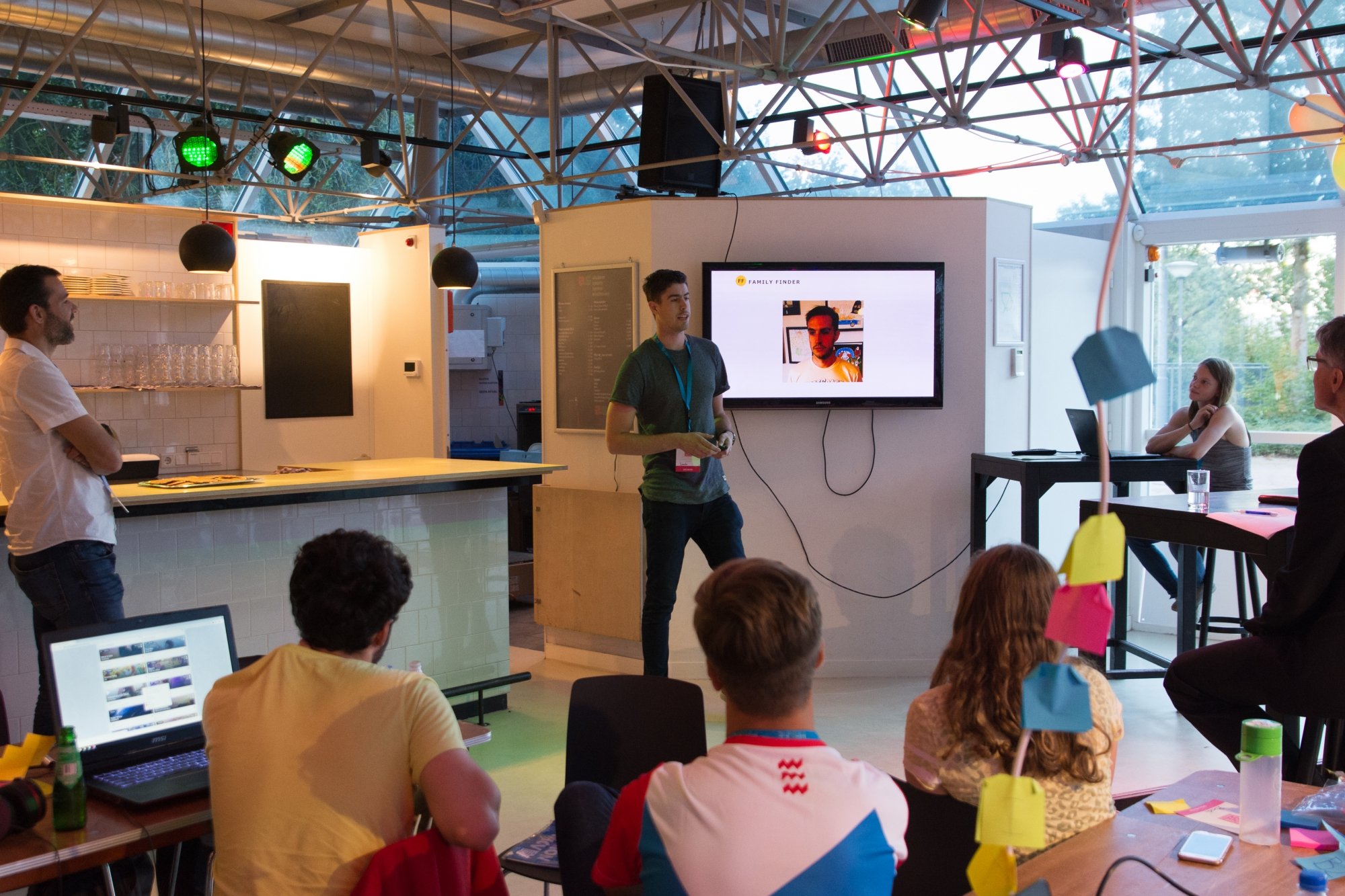
A marathon is a marathon, it is 42,195 km long, there are a start and a finish, a course and runners. Seems very simple but there is a lot to innovate. At least that’s what Edgar de Veer, organizer of the Eindhoven Marathon, thinks. “We have the ambition to become the most innovative marathon in the world.” That’s why the Eindhoven Marathon, together with Cluster Sports & Technology, Brabant Sport, TU/e and Fontys, organized the Design Marathon for the second time on 21 September. In a hackathon, three student teams came up with innovative ideas to increase the interaction between the audience and the runners.
Dariush Cyrroes is present from the Eindhoven Marathon. He is one of the jury members. The day went very well, he says. “It is nice to see that the students started with nothing this morning. During the day they got information and they came with three fairly simple and realizable ideas. It amazed me.”
One team came up with an app that helps a runner to find family and friends in the crowd. The Family Finder turns yellow when the runner is a kilometre away from the family and the closer the runner gets, the warmer the colour becomes. The family has a screen with dots with which they can see that the participant is getting closer. John van de Laar, owner of SportBizz and also one of the jury members, thinks this is a good idea that can be applied to festivals as well. “The other day I was at De Vliegende Vrienden. How nice would have been if such an app points you to a quieter place.”
Or the idea of Switchsprinter.com, a system that allows participants to hear voice messages from family via an earbud. Prior to the marathon, people can record messages and if the participant is having a hard time, such a recorded message will be heard.
The innovative ideas were judged by a jury, which, in addition to Van de Laar and Cyrroes, consisted of the chairman of the jury Aarnout Brombacher, Professor of Design Theory and Information Flow Analysis at TU/e, Annelies Goris, product manager connected health solutions imec, and Marc van der Zande, senior project manager Sport and Technology.
The winner is the Photo Challenge. First-year Industrial Design student Simone Ooms: “When you finish, the marathon stops. Many participants would like to have a lasting memory. And there are the spectators waiting for that one specific runner they came for. That’s why we came up with the Photo Challenge.” A spectator takes pictures of the runners who come close to the spectator. On the smartphone, a list appears with the numbers of the runners who are nearby. If you photograph those people, you score points. “A kind of competition with everyone who photographs or with your group of friends. It also allows you to spread people all over the course with a bonus system. If you take photos in locations where there are fewer spectators, you get more points. For example, the Oirschotsedijk.” Afterwards, the runner receives a map showing the entire run, with all the photos taken in between. “A kind of timeline of how you ran your marathon.”

Brombacher: “The Photo Challenge is a beautiful and practical concept. And during the pitch, one of the jury members came up with the idea to make the link with a good cause. The team immediately picked it up. That is ‘going on with hackathoning’ while you are giving a pitch. Great work.” Van de Laar: “I thought, ‘Why should I take pictures? What if you link it to a charity like KWF?’ How cool would it be if you could let your visitors help that charity by donating money with those pictures.”
Cyrroes sees opportunities to link the Photo Challenge to the current app of the Eindhoven Marathon. “I really want to sit down with them to realize and test it in the short term so we can add it to the marathon next year. It is very playful. It appeals to several target groups. If you are watching the marathon with your children and you are waiting for your partner to come by. You can give your children the phone to photograph people. That is fantastic for everyone.”
For Ooms it was an educational and fun day: “It was well facilitated and you had a whole day to brainstorm. You hear ideas from others and you learn from pitching. Within the course, we have a project where we can continue with this idea.”
During the Dutch Design Week, the students have the opportunity to pitch their idea again. There is room for this in the Brabant Pavilion, Marc van de Zanden explains. Finally, the students will present their prototype to the business community during the TU/e Demo Day. That will be at the end of December.
Part of Vitality Living Lab
The Design Marathon is part of The Vitality Living Lab, a large-scale project in which 16 organizations from the Cluster Sports & Technology are using smart technology to promote a healthy, active lifestyle: motivating users to make healthy choices, making sports easier to maintain, preventing injuries or, on the contrary, curing them faster.

